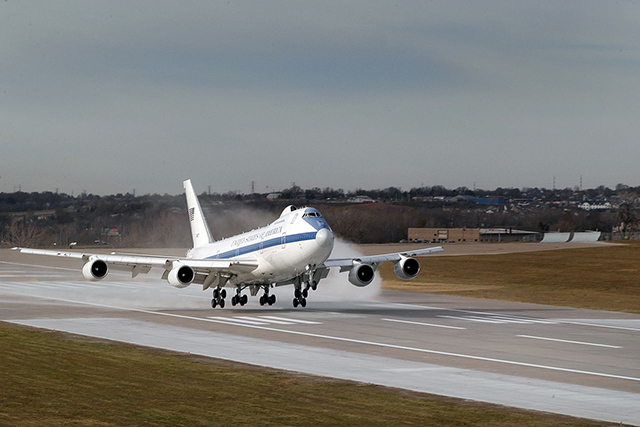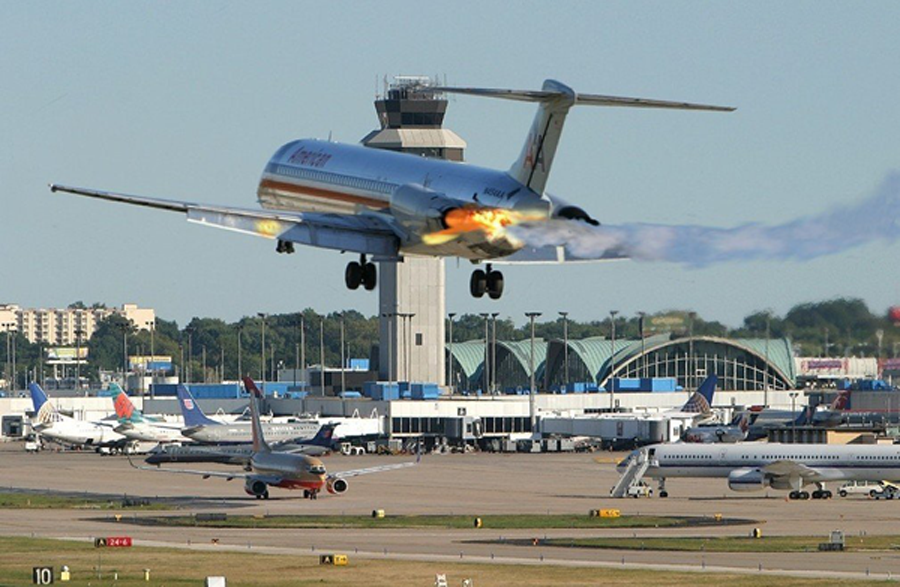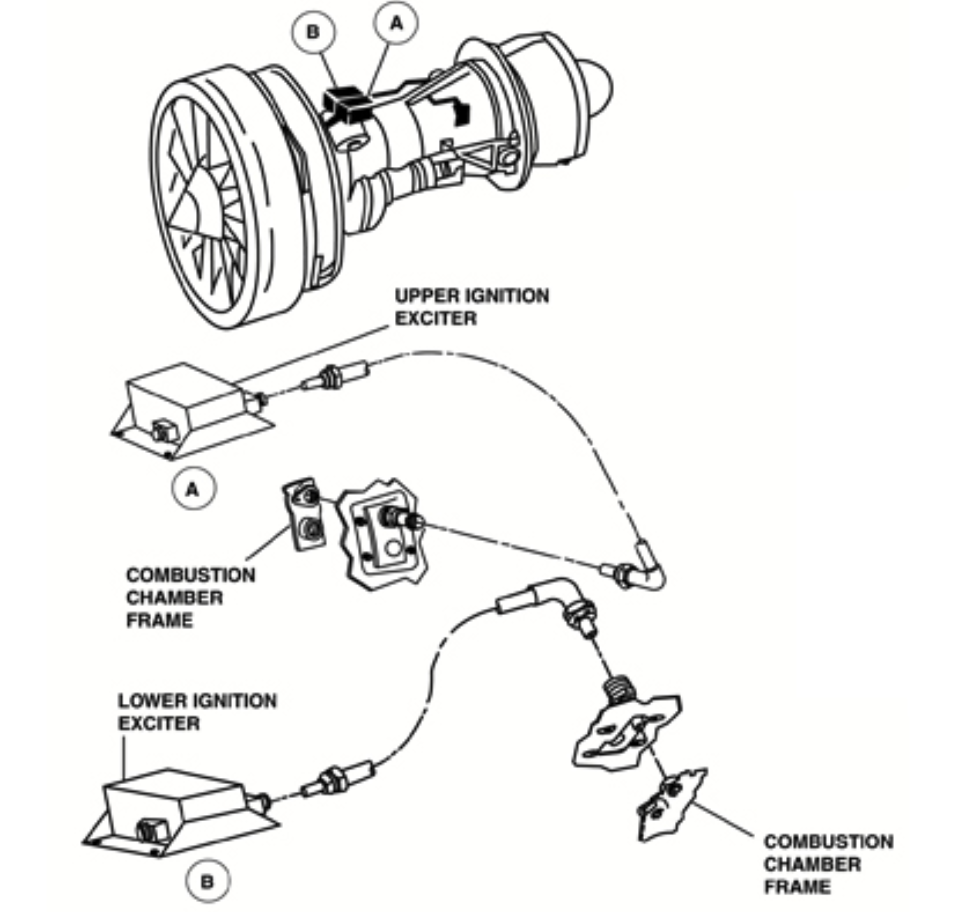Every now and then, I hear something in aviation that makes we wonder how any sane person could believe it. It takes a minimum level of intelligence to operate aircraft, my reasoning goes, so that should rule out idiocy. But the fact so many people do believe these things, I wonder if any of my beliefs are so patently idiotic.
— James Albright

Updated:
2023-10-15
I once heard that the best political lies are those with a grain of truth that create doubt. As implausible as the lie sounds, because part of the story is obviously true, perhaps the lie is too. That might be the case with these examples. The lesson is to treat anything that isn't part of accepted procedure with a bit of skepticism. In some cases, treat them with a lot of skepticism!

1
Depends on luck
Landing distance reduced!
When I flew the E-4B, an Air Force Boeing 747, we were required to land in 5,000 feet of runway with over 100,000 lbs. of fuel on board. Our 747s were well suited to the challenge, with low approach speeds, automatic ground spoilers, thrust reversers, and autobrakes. But still the squadron wanted us to hedge our bets and we were taught to aim for "brick one," the first inch of the runway, and to flare so as to put the main gear down within the first 500 feet of runway. So that is what I did.
A few years later, as an instructor pilot, I was teaching the method. Keep in mind all of our pilots came from other aircraft as highly experienced instructor pilots. One of these asked me, "what happens if you forget to flare?" As I pondered that, he asked, "what if the wind suddenly dies?" I gave the standard squadron answer: "we rely on our superior airmanship." But the thought nagged. I started practicing these landings on runways of much greater length and discovered that I could use the correct 747 aimpoint (the so-called "far bars"), use the correct flare technique (4 second pull from start of flare to touchdown), use the correct braking technique (just enough to stop in the desired distance), and still be able to come to a stop in 5,000 feet of runway. I then started doing this on 5,000 foot long runways.
The squadron was not amused but allowed pilots to select their own techniques so long as they met the 5,000 criteria and didn't break anything. Then one day one of our pilots put eighteen wheel prints in the displaced threshold at Andrews Air Force Base. The prints could have only come from one kind of airplane and a force greater that common sense took over at the squadron: embarrassment. So the old "brick one" technique finally died.
Half-truth: the sooner you touchdown the sooner you stop.
Half-truth: the landing flare extends the touchdown point of your main landing gear.
The whole truth: your main landing gear touchdown a significant distance behind your aimpoint.
The math behind why aiming short is relying on luck: Aim Point vs Touchdown Point.
An example of luck running out when aiming short: BD-700 C-GXPR.
2
Eventually fatal
V1 cuts without yaw!
My deep dive into engine failures during takeoff was in my Air Force Boeing 707 (EC-135J) squadron where we didn't have a simulator and did all the required practice in the airplane. This required the instructor to be hyper aware and I had a few scary moments where the student smashed the wrong rudder very low to the ground. There I was, sitting in the jump seat with an IP (Bernie) in the right and a seasoned pilot (Jones) in the left, 90-degrees of bank, 200 feet off the deck . . .
Many multi-engine pilots treat the engine failure after takeoff as a manhood test to see how quickly they can apply corrective rudder. After a series of fatalities in large Air Force aircraft, our squadron began preaching doing the maneuver deliberately and slowly. Applying the wrong rudder slowly was recoverable; doing so quickly could flip the airplane upside-down in seconds.
I saw Bernie brace his left leg, telling me he was going to pull the number four engine. The correct response to a failed right engine would be to press the left rudder to compensate for the excess thrust on the left. If the student were to press the wrong rudder, in this case the right rudder, the instructor would feel the wrong rudder pedal move aft in his feet and should be able to stop it before it became critical. His hand hovered over the number one throttle, an extra bit of theatrics he refused to give up. As soon as the altimeter passed 200 feet he pulled the number four throttle to idle. I saw the blur of Jones’ right leg stomp on the right rudder.
In an instant the airplane was nearly inverted. “I’ve got it, I’ve got it! Get off the rudder!” Bernie was yelling at the top of his lungs and managed to wrestle the airplane right side up, “Get out of the seat, James take over.”
Jones jumped out, grinning from ear to ear as if he had just flown the perfect check ride. I hopped in and got us back to Honolulu. Bernie sat quietly in the right seat. I negotiated with Honolulu tower for an immediate landing and in fifteen minutes the nightmare was over.
From: Flight Lessons 2.
I came up with a procedure to avoid all this drama and tested it on Bernie the next week.
“Feet on the floor,” I said. “I’m pulling the number four engine now.” As the thrust decayed to zero the left wing started to rise, the two engines on the left overpowering the one engine on the right. “Keep the wings level with ailerons only,” I said. Bernie moved the yoke to the left and our wings were level. “We are flying, Bernie. We have an engine out, no rudder, and we are flying. Sure we are flying a little sideways, but the airplane is safely flying. There was no need to react quickly. Quick risks death; slow and methodical, that’s the way to go.”
From: Flight Lessons 2.
Half-truth: Eliminating yaw following an engine failure will improve aircraft performance and handling characteristics.
Half-truth: Quickly identifying which engine has failed can improve the odds of eliminating the yaw before performance becomes critical.
The whole truth: When identifying the failed engine, it is more important to be right than quick. More about this: V1.
Examples where getting the wrong engine can be fatal: British Midland Airways 092, SA Airlink 8911, Transasia 235. Other examples of how making quick decisions during takeoff will expedite your troubles: CAVOK 7087, US Air 1702.
3
Just dumb
Not all half-truths result in a loss of life or catastrophic accidents, most are more insidious. Some can only be classified as dumb. The good things about these just dumb half-truths is that they give you an opportunity to spot someone who lacks the common sense to be considered trustworthy. A few examples:
An extra margin of safety invented!
James,
I had a Challenger 604 contract trip last Monday and Tuesday. Van Nuys to Ohio and next day Alabama home. Anyway, this nice Captain insisted on ignition during every takeoff and landing. I found my GE Notes publication from 2012 which says GE product support doesn’t recommend this practice and it will degrade component lifespan by 45%. GE suggests changing ignition inspection to every 200 hours if the PIC does this. The CF34 is designed to be FOD tolerant, but pilots think they know better than the manufacturer and all the lawyers.
C
Half truth: Continuous ignition helps relight the engine should it flame out.
Half truth: Some aircraft recommend the practice during some conditions, so it must be a good thing to do.
Whole truth: Going against the manufacturer's recommendation not only shortens the life of the components, it makes it more likely the next pilot will not have the component available when it is really needed.
Maximize that tailwind!
James,
I thought I won the lottery, getting hired to fly as a first officer on a very nice Learjet 35 with a veteran Lear pilot who could teach me everything I needed to know to jump to the big leagues. He has been very good except for one thing he does that drives me crazy. Whenever we have a tailwind at cruise altitude, he cranks up the pressurization. He says it makes the airplane bigger so we catch more of the tailwind and save gas. When we have a headwind, sure enough, he reduces the cabin altitude to as high as 10,000 feet, to make the airplane smaller. Please tell me, is he nuts or is it me?
L
He is nuts.
Half truth: A larger object catches wind and can be pushed along relative to the ground.
Half truth: An aircraft tends to expand when pressurized.
Whole truth: Objects in a moving airmass move relative to that airmass, not the ground.




